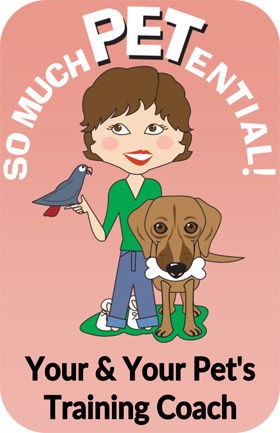stubborn dog
Have A Jealous Or Stubborn Dog? Why I Can’t Help.
NOTE: I have a new pet behavior blog located at http://www.SoMuchPETential.com/blog. Thanks!
It happens SO often. When you ask pet owners about problems they are having with their pets, it boils down to their pet being dominant, jealous, dumb, stubborn, territorial, vicious, a pest, or just plain BAD.
Well, here’s the thing. When you tell me your dog is jealous, stubborn, or unmotivated I have absolutely no idea what it is  that your dog is actually ‘doing’ that causes you to see him as jealous, stubborn or unmotivated. When you tell me your bird is dominant or vicious, a number of different pictures go through my head – none of which could describe how your bird is behaving.
that your dog is actually ‘doing’ that causes you to see him as jealous, stubborn or unmotivated. When you tell me your bird is dominant or vicious, a number of different pictures go through my head – none of which could describe how your bird is behaving.
Descriptor words like jealous or stubborn really serve no value when it comes to behavior modification. They are adjectives that are better known as constructs in the science world.
In a recent course I took from Susan Friedman, Ph.D., she described it this way: “A construct is a kind of label that goes beyond a description of observed behaviors into the realm of hypothetical explanations for why an animal does what it does. While a construct may give a summary for a pattern of behavior, it serves as no help when it comes to developing a plan for changing the behavior with the most positive and least intrusive strategies.”
Susan went on to teach us that “constructs are nothing more than concepts that can’t be tested; constructs provide us with excuses to blame or worse get rid of the animal; constructs increase the use of ineffective training strategies and strategies based on punishment; constructs give us a false understanding of the problem when we’ve only given it a name; constructs foster self-fulfilling prophecies because you get what you expect; and constructs end our search for actual causes we can do something about.”
Just the other day someone was complaining to me about problems she was having with her dog who became ‘jealous’ when she got a boyfriend. “Baxter is a good dog. He’ll grow out of it,” was her response when I asked more questions.
Hmm. How about, instead of labeling her dog’s behaviors with constructs, she asks herself the following questions instead: What does this label ‘look’ like in terms of actual, observable behavior? Under what conditions does the behavior occur? What is the immediate outcome the behavior produces for my dog?
The answers will help her determine clearly defined behavior-change targets, antecedent predictors that set the behavior in motion, and what consequences maintain or strengthen the behavior. For example, instead of saying, “My dog is jealous,”, she could say, “When I sit on the couch with my boyfriend (antecedent), Baxter paws and bumps me (behavior) until I give her attention (consequence).”
Now I can see clearly what the behavior is that my friend wants to modify with an alternative behavior she wants to see more of instead. Now she can create a plan to make changes in the environment to set Baxter up for success such as teaching Baxter a behavior that is put on cue, and that is given when she sits on the couch with company.
And in the end, everyone succeeds.














